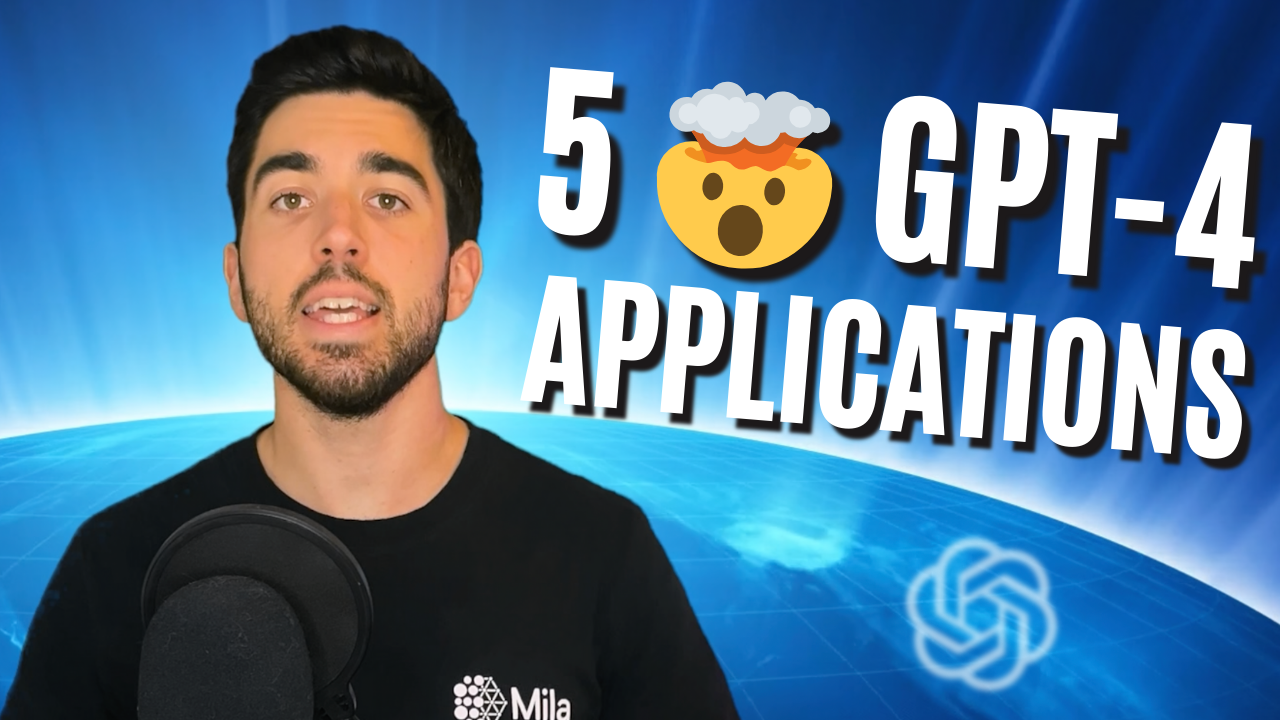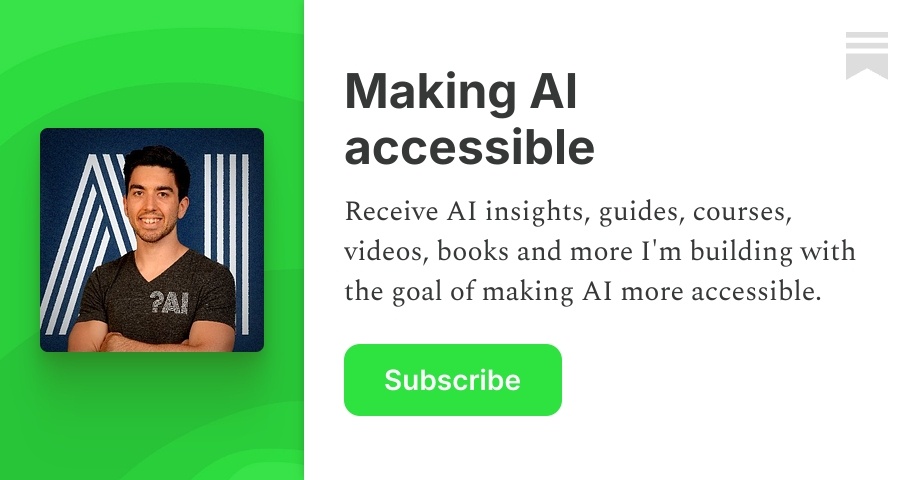The Future of AI: 5 Incredible Ways GPT-4 is Shaping Our World
Discover 5 Game-Changing Applications of GPT-4 and Llama-2 – No Coding Required!

Watch the video:
I’ve done articles on large language models like GPT-4 and Llama-2, like how to train them, fine-tune them, improve the outputs through the parameters or prompting, and more. But one thing I’ve only quickly gone over is how they can actually impact our world. And I think it’s also important to showcase what we can actually do with a language model like this. Here are 5 very cool applications entirely built around a large language model like GPT, which you can already do by yourself without any knowledge of code!
Let’s not waste any more time and dive into the coolest things people built using mostly an LLM like OpenAI’s GPT-4 model.
1. Analyze and communicate with data sources
The first one, and coolest in my opinion, is that you can quite easily create your own documentation chatbot. Using a technique called retrieval augmented generation, you can take any source of documentation you have, including books, website sources like Wikipedia, etc., and save it in a memory. Then, you can simply use a model like GPT-4 with good prompting to only answer questions that appear to be related to your dataset. You can even make it give the sources for its answers if your data is available online.
For example, with Towards AI we just released an AI tutor we’ve been working on, which you can try with the link below right now if you’d like to see how such an application works by yourself. It can answer most AI questions for the two courses we built on LangChain and on LLMs. W
Using retrieval augmented generation, or RAG, is my favorite approach to using LLMs as it mitigates lots of hallucination issues as you prompt the model only to answer based on the documentation you control.
Join my newsletter for more:

2. Build customized copilots and assistants
Speaking of data, you can use an LLM as a personal assistant for the topic of your choice. Almost any topic or field you can think of. For example, here, a company called Spark Stylist created a fashion assistant with MindStudio using a combination of clever directions and prompting to the bot as well as asking many personal questions to the user that they then implement into the bot’s knowledge. Then, you can ask it any questions about how you should dress or anything fashion-related, and it will answer your questions based on your personality.
Using such personalized data is super important to make your system more intelligent and robust. It’s also a good idea to tell it its boundaries, how it should behave, and when it should not answer questions if you want a safe and robust assistant.
3. Create interactive ChatBots with a detailed personality and specific knowledge
You can replicate pretty much any personality or source of knowledge if you have it. For example, you can give a language model all of Plato’s books and have your personal Plato. This might not be super useful in the real world, but making your model act a specific way can be quite powerful for a brand. For example, a company used MindStudio to build a ChatBot that can build a business strategy using “Art of War” tactics specifically! All based on the book. So yes, you can upload complete texts and not just summarize with a maximum number of tokens! Then, you can use their system to apply its learnings and business advice directly inspired by the Art of War book!
This is just one real-world example of many, but you could give a language model any book or podcast and video transcripts and make it act and answer following those personalities or amazing sources of knowledge! For instance, one of my friends is currently building such a system on all of Andrew Hubberman’s podcast episodes, which I’m super excited to try.
4. Correctors (for writing and code!)
My favorite use of LLMs is for writing and coding. Being a non-native English speaker, ChatGPT is super useful to correct your grammar and help improve some parts of your writing or at least brainstorm with it. It’s like always having a friend with infinite ideas. Even if those ideas are often pretty bad, some of them are amazing or easily adaptable. Now that I think of it it’s like having a super creative friend, or one under some substance, that can spam you with somewhat related ideas about what you want to write, so one out of ten surely lands.
Likewise, LLMs to code is simply incredible. It can generate you super useful functions or code in a fraction of a second instead of having to write it yourself or google for a similar approach and adapt it. The only thing is that it requires some work detailing what you need, but it is definitely worth it. If you are coding without any AI help, as I have done until two months ago, I urge you to give it a try and stick with it for at least a week. You’ll get addicted, I promise.
Personally, I do this using the ChatGPT interface with GPT-4, which has much better results than GPT 3.5.
5. Build a Coder or even a Business creator for you!
LLMs can also be used to build a team of programmers or a business from scratch, such as MetaGPT, which allows you to chain language models we call agents to replicate industry roles and create code-based apps like video games and more. Similarly, BabyAGI and AutoGPT can manage tasks with diverse complexities. MetaGPT stands out by integrating human standardized operating procedures (SOPs) to navigate the common problem of ‘hallucinations’ where the AI outputs nonsensical or inaccurate information.
The MetaGPT model employs multiple agents, each assigned with a specialized task and guided by SOPs to ensure accuracy and consistency. This strategic approach mirrors a team of professionals working in unison, each expertly navigating their designated roles to create a well-rounded and refined final product. User-defined objectives and constraints further hone the process, ensuring that the AI’s output aligns closely with human expectations and standards.
In this innovative framework, each AI agent contributes to a harmonious workflow, their interactions and outcomes meticulously documented to enhance consistency and mitigate errors. The result is a streamlined, efficient process that transforms a user’s initial prompt into a polished, completed project, be it a sophisticated video game or a comprehensive business model. This is a super advanced use of LLMs that is quite new and in a huge explosion with tons of new approaches in the making. By the way, you can already try and use all of them with an OpenAI key or open-source model like llama-2 to use as your language model for the agents. You just need to ask it what you want, and the agents will do it for you!
In short, we saw that language models can do a wide variety of tasks. Not only are they interesting to understand, but they are also super cool to use, and getting to learn to control them better. It’s definitely an art to master them, and it requires practice. Still, they are not generalists, and even if ChatGPT itself is super powerful, those models are much safer to use when you control its environment and all cases possible. So, for now, until the models become really intelligent, the more specific your application is, the safer it is for you to host and share with others, and the more powerful it can be!
I’d love to know if you have any other applications built using LLMs that I did not cover here!
Thank you for reading through the whole article, and I will see you next time with more AI news and approaches!

